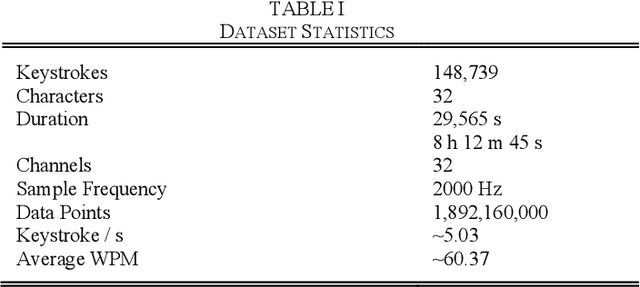Natural Typing Recognition via Surface Electromyography
Paper and Code
Sep 29, 2021
By using a computer keyboard as a finger recording device, we construct the largest existing dataset for gesture recognition via surface electromyography (sEMG), and use deep learning to achieve over 90% character-level accuracy on reconstructing typed text entirely from measured muscle potentials. We prioritize the temporal structure of the EMG signal instead of the spatial structure of the electrode layout, using network architectures inspired by those used for real-time spoken language transcription. Our architecture recognizes the rapid movements of natural computer typing, which occur at irregular intervals and often overlap in time. The extensive size of our dataset also allows us to study gesture recognition after synthetically downgrading the spatial or temporal resolution, showing the system capabilities necessary for real-time gesture recognition.
 Add to Chrome
Add to Chrome Add to Firefox
Add to Firefox Add to Edge
Add to Edge